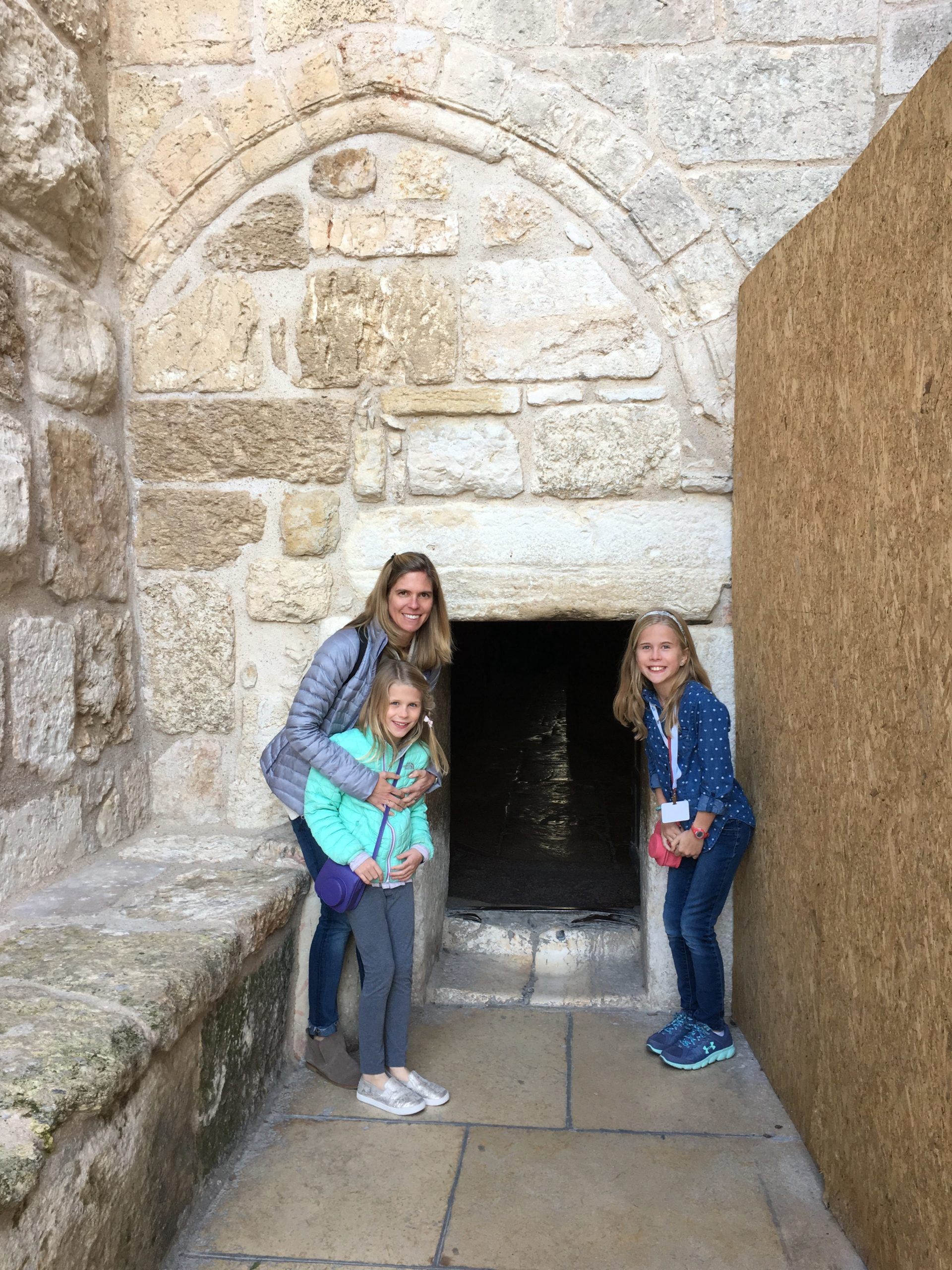
Today was another day of visiting incredible places, first on the list being the Holocaust Museum in Jerusalem. Children under 10 are not allowed in the exhibit, so while Lillian and I walked through together, our tour guide sat outside with Lizzie and treated her to ice cream. As I walked through the entrance, I thought of the irony that my eight-year-old was not allowed in to see an exhibit on the Holocaust while so many eight-year-olds endured and died in the Holocaust. After seeing what I saw today, my prayer is that we learn from history and and the horrors that occurred and that the church learns to love our Jewish friends and neighbors well, using the cross as the ultimate way we choose to love and not as a weapon we choose to wield.
After the Museum, I had several significant moments of the day, one of them standing on top of Haas Promenade, providing a beautiful and sweeping view of the city of Jerusalem. It was from this vantage point that Abraham would have seen Mount Moriah in the distance as he approached the appointed place of obedience and sacrifice with his son, Isaac.
But my favorite moment of the day came while standing inside the Church of the Holy Nativity in Bethlehem. And as much as I hate to disappoint, Bethlehem is a disappointment. Through the last 1500 years that a church has stood on top of the site that Jesus supposedly was born, the place of His birth has become a shrine to relics instead of an experience with a holy God. In fact, the overwhelming emotion one feels is sorrow that the birth place of Christ seems to mean more than the actual One who was given. But, as we made our way out of the church and out into the courtyard, we came face-to-face with a statute of Jerome. Born in the 4th century A.D., Jerome was a priest, historian, theologian and translator. In his 60’s, he moved to Bethlehem and took up residence in the cave where it is believed that Christ was born. He spent the last part of his life translating the Scriptures from the Greek and Aramaic languages into Latin, the people’s language of the day. He was the first translator, so to speak, who gave the Bible to God’s people in their heart language, a language they could hear, digest, and understand.
But here’s what I really love about Jerome. On his desk, he kept a human skull. Gross, I know. But he did it to remind himself of death. He did it to remind himself that his days were short, his work of translation must continue quickly, and that his time must be used wisely.
I could use a reminder like that on my desk. Perhaps not a skull. But maybe, like my friend Roy Peterson, an hour glass, a symbol to remind me that my days are short and the time I have been given to love God, love people, and seek first His Kingdom and His righteousness are short.
I want it to be said of me like it was said of David, another resident of Bethlehem, that “when David had served God’s purpose in his own generation, he fell asleep; he was buried with his ancestors” (Acts 13:36). And when the sands of the hourglass run out and it is my time to fall asleep, like David, and seemingly, like Jerome, I want to have served God’s purpose in my own generation, remembering that my time is short and the moments that I have must be moments that are lived for Him.




